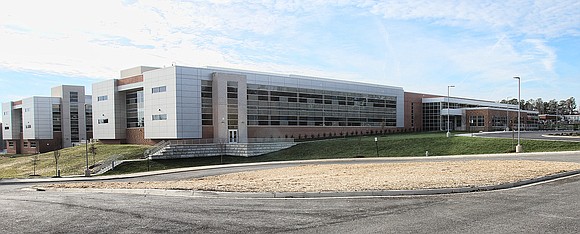Skipping school
Data show that 40% to 60% of Richmond area teachers are absent from the classroom 11 or more business days a year
Jeremy M. Lazarus | 1/28/2021, 6 p.m.
Students always seem to be the focus of concern when the discussion centers on the ill effects of class-cutting, truancy and chronic absenteeism on education.
Far less attention is paid to the many full-time teachers who also regularly play hooky from their classrooms.
On any given day, 10 percent to 40 percent of teachers are taking time off in Virginia and across the country, according to national figures, leaving school systems scrambling to find substitutes and adding to instructional costs.
U.S. Department of Education data show 36 percent of teachers are away from their classrooms 11 or more day each year, in addition to the regular vacation days for Thanksgiving, winter and spring breaks and national holidays.
Data show teacher absenteeism is higher than the national average in the Richmond area, with school divisions reporting 40 percent to 60 percent of teachers absent 11 or more business days a year.
That’s a big deal given that educational research has found that teachers are a key element of student achievement and that student success rates appear to fall when teacher absenteeism is high.
Educational statistician John Butcher of Richmond found that increases in teacher absenteeism can explain about 10 percent to 12 percent of the variation in student achievement on state Standards of Learning tests.
Traditionally, teachers work about 200 days a year between late August and the close of classes in late spring. An additional 11 days off amounts to 5.5 percent of the work year, or nearly double the 3 percent national rate of absence for full-time wage and salaried American workers.
Teacher absenteeism is a common theme of suburban as well urban divisions, according to the latest data from the U.S. Department of Education’s Civil Rights Data Collection. Released a few months ago, that data is from the 2017-18 school year.
In the reports, Halifax County led Virginia in teacher absenteeism, with 80.8 percent of teachers absent 11 or more days. Halifax County barely edged out Amherst County Public Schools, which reported 80 percent of teachers out 11 or more workdays.
Public schools in Loudoun and Warren counties ranked third and fourth worst, with teacher absentee rates of 67.1 percent and 66.4 percent, respectively. The Richmond area was close behind.
For 2017-18, the data show, 46 percent of Chesterfield County’s teachers were absent 11 or more days, while 38 percent of Hanover County’s teachers, nearly 60 percent of Henrico County’s teachers and 40 percent of Petersburg’s teachers all missed 11 or more workdays that school year.
For Richmond Public Schools, teacher absenteeism is a perennial issue.
While classroom teachers already have 22 days off built into the RPS calendar, 58 percent of the city’s educators also were absent 11 or more workdays, according to the CRDC, which began tracking teacher absenteeism in 2009.
According to the CRDC report on Richmond, the school system employed 1,666 teachers in 2017-18, of whom 966 used leave and sick days to take extra days off.
Mr. Butcher noted the CRDC data indicated that only five schools had teacher absentee rates below the state average of 38 percent—Richmond Community High School, Ginter Park, Greene and Munford elementary schools and Richmond Alternative School.
Meanwhile, Mr. Butcher said data show that William Fox, Chimborazo and Fairfield Court had the highest teacher absentee rates among city elementary schools; Lucille Brown, Henderson and Binford had the highest rates among middle schools; and Huguenot, Armstrong and John Marshall were the leaders in teacher absenteeism among high schools.
Still to be answered is the question of whether virtual learning that has allowed teachers to run their classes from home using online connections to students via computers and other internet-enabled devices have impacted teacher absenteeism.
The answer from RPS: Yes.
In response to a Free Press query, RPS spokeswoman Danielle Pierce stated, “In general, the overall absenteeism rate has decreased during the pandemic.”
However, she didn’t offer data from the current school year supporting that.
Ms. Pierce noted that Superintendent Jason Kamras and his executive team installed a new approach this year, which involves assigning full-time substitutes to each school “to fill in for a specific class in the event of an absence or to provide support in other areas as needed.”
Currently, 140 substitutes “are in schools each day,” Ms. Pierce stated. However, she added, “Because it’s a new model, we are unable to compare it to the numbers from previous years.”







